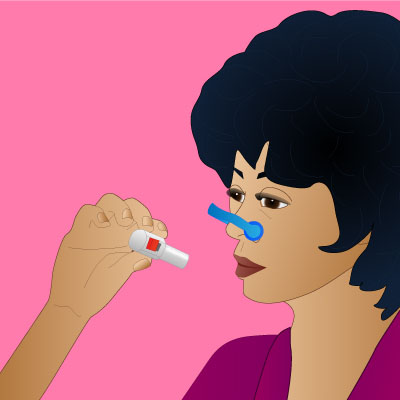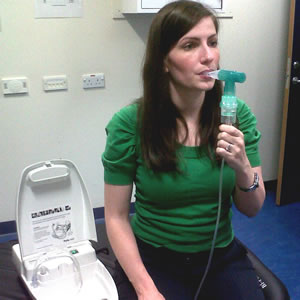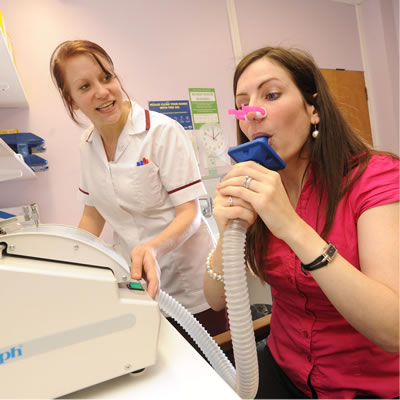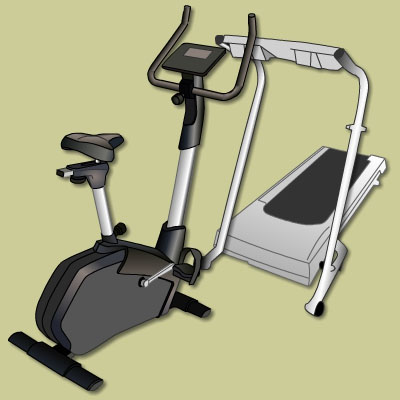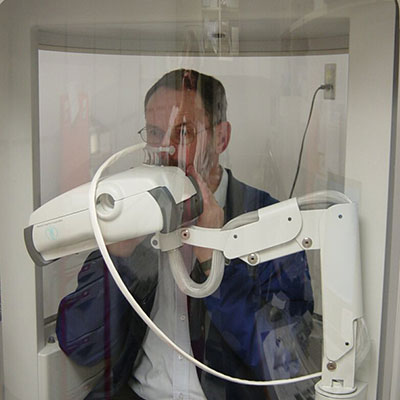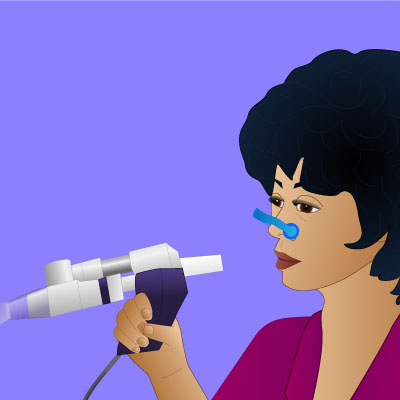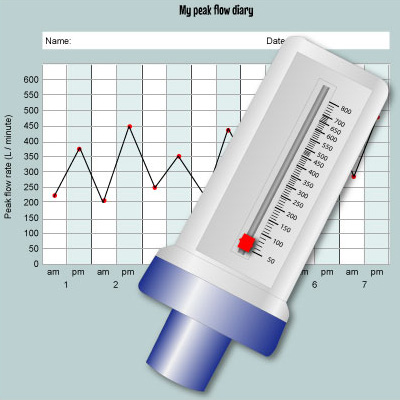
Peak flow diary and meter
Diagnosis is based on :
- Good history taking, to find any relationship to work exposure and symptoms. The history can be more useful in excluding Occupational asthma.
- Any current medical problems.
- Current medication.
Initial screening for Occupational asthma involves the use of Peak flow and peak flow diary recording over an extended period of time. For more information please see the Peak flow section on this website.
Peak flow diary may show dips in peak flow readings from morning to mid day when at work then again at night when at home. If your symptoms are reduced at weekends or when you have days off this should show on your peak flow diary.
Testing of occupational asthma is not routinely done in all hospitals and may require a referral to a specialist centre. This test involves the patient carrying out their usual work activity involving either chemicals, or fumes that provoke symptoms.


